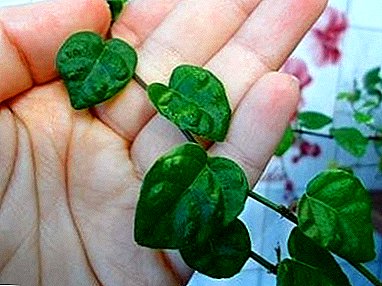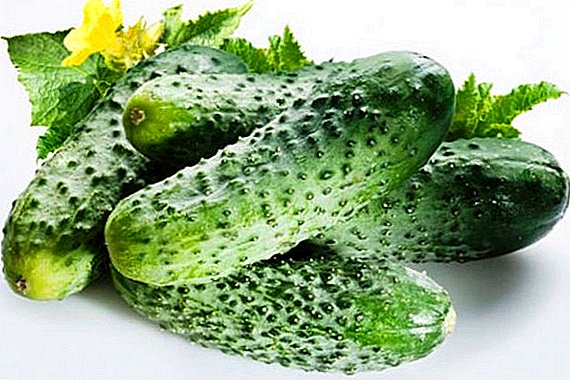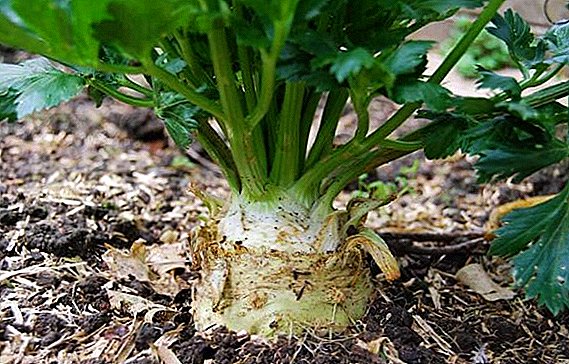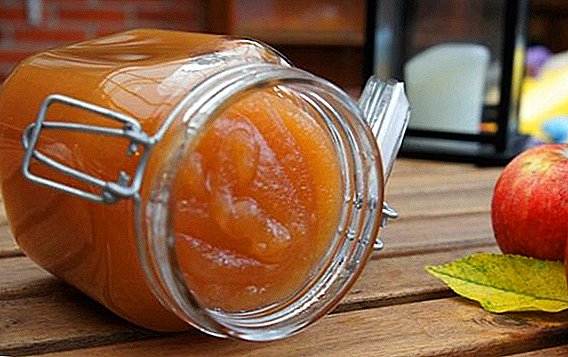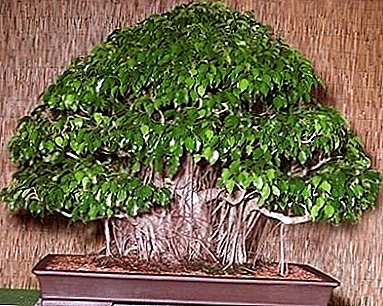
Ficus - the perfect complement to the interior of the home.
To preserve the decorativeness of a plant, it must be replanted on time and according to all the rules.
Ficus transplant
Most often in the trading networks of plants are in unsuitable conditions. They are often flooded, they do not have enough light.
But even if the acquired plant has a relatively healthy appearance, it should be transplanted immediately after purchase. How to transplant ficus at home?
The fact is that for sale ficuses are placed in a special transport substrate, which is not suitable for long-term cultivation.
Container for transportation is also not suitable, the plant there is no place for development. Turning over the pot, you will see that the roots literally wove the bottom, penetrating out through the drain hole.
Tip: After the purchase, do not transfer immediately - wait a week, so that the ficus will get used to the new place of residence.
How to remove the ficus from the store container, and transplant it into the pot at home without hurting the roots? Make it very difficult. Experienced growers are advised not to pull out the plant.
Better, carefully cut the container, remove it. This is easy to do, since the material of the container for sale is soft and easy to cut.
An earthen clod of store plants is very dense, but our task is to completely remove it. Do it gradually, lightly tapping on some surface, helping with a wooden stick.
Important: do not tear the roots during the cleaning - after that the plant may not survive.
Useful video: how to properly transplant ficus at home?
If the plant was flooded, parts of the roots must have decayed, and they must be cut out.
To find such areas, the root system must be flushed.
Cut off rotten areas sharp scissors, without affecting the healthy roots.
The treatment of slices with disinfectants recommended for other plants is not necessary for ficus.
The milky juice contained in this plant itself has bactericidal properties. The wounds will heal on their own.
Next, the ficus is placed in a prepared pot, covered with soil, tamped and watered.
When the need arises?
If you notice that the soil in the pot dries out too quickly, and the roots appear on the surface, then transplantation is necessary. But it is better to avoid such a phenomenon, observing the planned multiplicity of the procedure, depending on the age of the plant.
- Young, actively growing specimens (1-3 years) - once a year.
- Plants aged 4-6 years - in a year.
- Old copies - in 3-4 years.
Performance technique
How to step ficus transplant at home?

- Watering before removing. It helps painlessly remove the plant from the old dishes.
Preparing a new tank.A drainage layer is laid on the bottom, a small layer of soil is poured on it.
Cleaning the roots of the old soil.Carefully, but carefully, without tugging and not tearing the roots, clean off the used substrate. Cut off dried roots.
- Putting the plant in the pot. The ficus is located in the center, the remaining space is filled with the prepared substrate.
The planting level should be the same as in the previous pot (for the rules of planting ficus in the pot, read here).
If you fall asleep root neck, ficus will begin to hurt.
Soil compaction. It is carried out gradually and carefully.Do not crush the ground, just tap the edge of the pot for better distribution.
- Watering. Ficuses can not be watered with simple tap liquid.
It must be defended, filtered or prepared by the method of freezing.
The temperature should be room, from the use of cold water, the plant will begin to ache. You can soften the water and boiling followed by draining to release from lime.
Ideal option - thawed or rain water. After transplanting, pour the ficus plentifully until the liquid is poured into the pan.
Half an hour after watering, drain the water from the pan. The next watering spend only after complete drying of the upper layer by one third (check the drying by putting your finger in the soil).
After transplantation, put the ficus in its place and preferably the same side to the light. If it was grown on a sunny window, pritenite it for the first time.
Sometimes it is difficult for Ficus to adapt to new conditions, and it begins to shed its leaves. It is a mistake to replant it again, assuming that the soil did not fit.
Also, in this case, it is not necessary to rearrange it, begin to rotate, feed. Leave the plant alone, let it recover on its own.
You can only spray it with Epin, it will strengthen the plant and help it to recover and start growing.
Keep track of the condition of the soil and the humidity of the air. In hot weather, spray with soft, warm water.
A prerequisite for survival in the new soil - the temperature of the content. Ficus should not freezeThe temperature should be maintained in the range of 22-250.
Attention: in a cool room, he will start to hurt and may die.
Compliance with all the rules of ficus transplantation will allow you to grow a healthy, beautiful copy to decorate the interior of your home.
Autumn plant relocation
The best time is spring or summer.
The main condition is warm and dry air.
Inexperienced flower growers often ask the question: how and when can the ficus be transplanted?
 Ficus transplantation in the fall - time of preparation for the rest period. The process of growth slows down, and the accumulation of strength begins to hibernate (how to care for ficus in the winter at home can be found here).
Ficus transplantation in the fall - time of preparation for the rest period. The process of growth slows down, and the accumulation of strength begins to hibernate (how to care for ficus in the winter at home can be found here).
Is it possible to transplant a ficus in November?
November - the beginning of the rest period.
At this time, daylight hours are shortened, and the plant cannot produce enough nutrients.
He will have to survive, spending accumulated in the summer and autumn stocks.
Naturally, the transfer of the ficus from November to March is not desirable.
The plant is already difficult, and the procedure will cause the need to also adapt, relive stress. But there are cases where land replacement is needed.
You could not do it in time, and the plant began to wilt, or rot from unsuccessful watering.
In this case, the transplant has some special features:
- Soil, drainage, dishes, water for irrigation and spraying should be warm.
- Place tea bags soaked in boiling water on the drainage layer.
This technique will help prevent soil leaching and provide additional nutrition to the roots.
- Cut the underexposed, weak, stretched shoots, so that they do not take away the strength of the flower.
- Do not place the plant on a cold floor or windowsill. Make sure that when airing it does not get cold air from the vents.
Attention: especially dangerous touch leaves, even the edges, to the icy glass of the window.They will suffer from local frostbite.
The soil
Selection of the right soil is an important point for growing indoor plants.
 Ficus are not very sensitive to the composition of the soilbut still there are certain requirements for them.
Ficus are not very sensitive to the composition of the soilbut still there are certain requirements for them.
The substrate should be neutral or slightly acidic, breathable, well-retain moisture.
Definitely not suitable mixture with a high content of clay. It will stagnate moisture, which will cause rotting of the roots.
Different composition is selected and depending on the age of the plants.
Young copies you need maximum friability, and for adults the ground should be sufficiently dense.
Composition for young specimens - leaf humus, peat, sand in equal quantities.
For adults - humus, turfy ground, peat, sand (1: 1: 1: 1) or humus, turf, sand (2: 2: 1).
The necessary looseness is also achieved by adding a small amount of claydite.
These porous stones give air permeability, absorb moisture and fertilizer, and then gradually share them with the roots.
Adding biohumus stimulates the growth of ficus, improves survival in the new soil.
Lime or dolomite flour should also be added to the soil. These minerals deoxidize it and enrich it with magnesium and calcium.
You can add wood ash, it also contains trace elements.
The composition is always indicated on the packaging, and you can make the right choice to ensure the maximum comfort of your pet.
What dishes to choose?
Material
 Maybe any, you only need to take into account the characteristics of each.
Maybe any, you only need to take into account the characteristics of each.
Clay containers absorb moisture well, which means they will protect the plant from accidental overwetting. But this feature must be taken into account before boarding.
To prevent a clay or ceramic pot from collecting all the moisture from the soil, hold it in the water for an hour.
Plastic does not absorb water. When choosing it, increase the height of the drainage layer at the bottom.
It is also recommended to lay out a layer of peat or sphagnum on it - this will improve the aeration of the roots.
For old ficuses fit wooden tubs. Before using them, they are burned inside to form a thin layer of charcoal.
It performs a disinfecting role, deoxidizes the soil and protects the wood from rotting.
Tubs should be made of oak or pine. Other types of wood quickly become unusable, and you have to replace it at the wrong time, and this is not desirable for adult specimens.
The form
Standard pots with approximately equal height and diameter will do.
Too high or wide dishes will not work - the soil, not mastered by the roots, will be sour. Some types of large space in general is contraindicated.
The exception is the cultivation of ficus in the style of bonsai. For such instances, flat and wide dishes are selected, with a height of no more than ten centimeters.
- How to propagate ficus at home?
- Why do the leaves turn yellow, blacken and fall? What to do in this case?
- What are the benefits and harm of ficus? Poisonous or not?
The size
New pot is being selected 3-4 centimeters wider than the previous one. When a plant is placed in it, the gap between the roots and the edges should be about 3 centimeters - these are ideal conditions for the development of the root system.
In addition, the height of the roots need to be buried by 2-3 centimeters from the drainage layer. That is, 5-6 cm from the bottom. In this case, the top layer of the earth should not exceed 5 cm.
A wooden tub for transplanting an adult ficus is selected on 6-7 cm wider and 8-10 cm higher.


